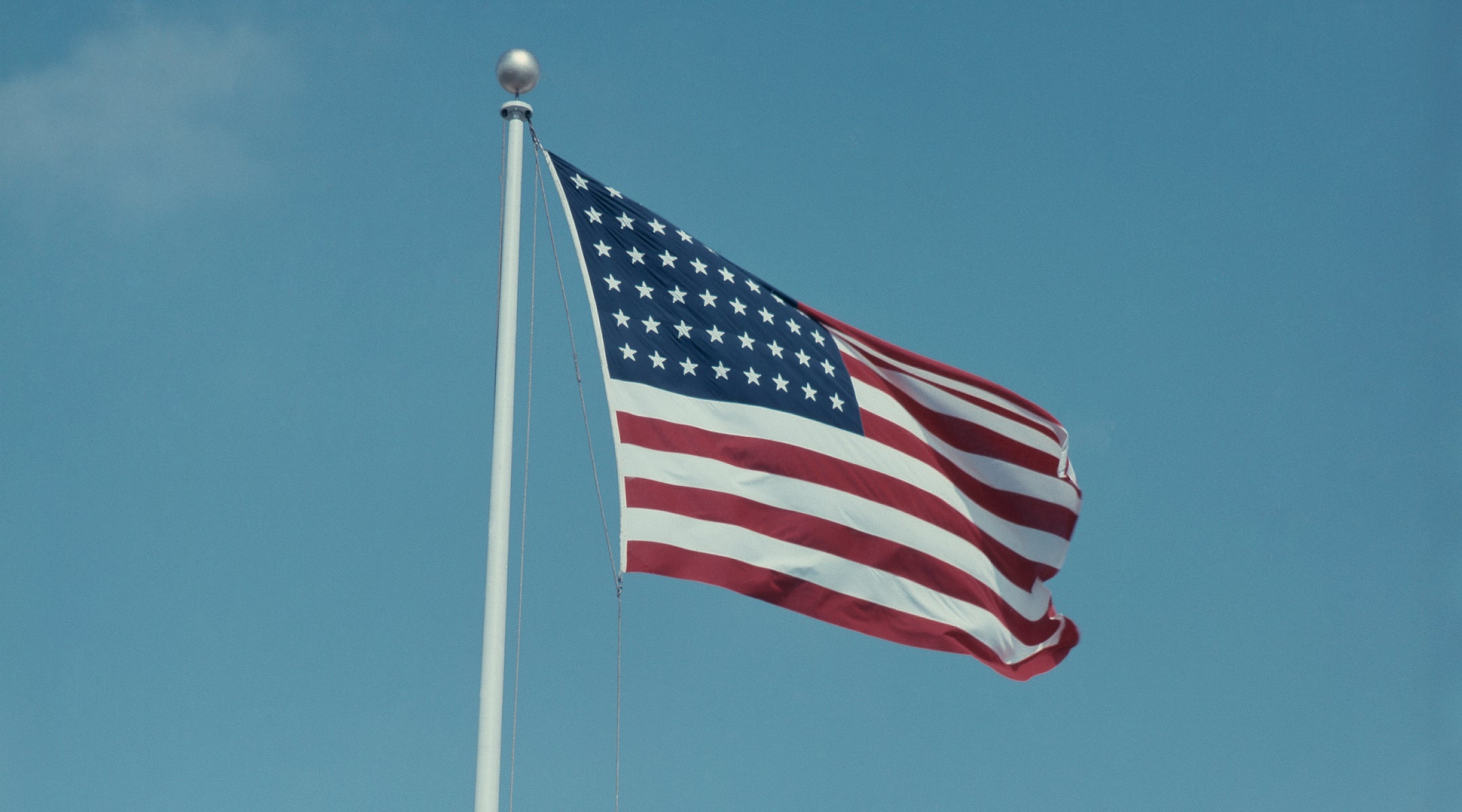(New York Jewish Week) — This past weekend, streets were lined with American flags in recognition of Memorial Day. I was moved by these flags — flapping smberly and cheerfully as I drove past. Our flag often reminds me of my grandfather: a proud immigrant to this country, he was fiercely protective of his adopted home, the values, possibilities and opportunities it represented.
We begin a new book of the Torah this week, Bamidbar, or Numbers, a book that further launches the Israelites into the expanse of the wilderness. Perhaps as a way to anchor these wandering people, God instructs Moshe to organize them — asking Moses to take a census and cluster the people according to tribe, each represented by its own banner. Like the American Stars and Stripes, the tribal flags are meant to signal something essential for each tribe, a guide to move them through the desert and remind them of their shared identity. The flags also connect them to one another, as each tribal flag is assigned a color that is represented on the priestly breastplate, a single adornment that holds each of these extended families together, close to the heart of the High Priest during every ritual.
This is not the only time that God asks Moses to count the people. The medieval sage Rashi teaches that God counts the people as an expression of God’s tenderness toward them. God counts the people to be reassured that they are still there, still safe, still committed to this Divine relationship.
If the counting is God’s demonstration of love, the flags can be seen as the people’s response to that love. According to Avivah Gottlieb Zornberg, “The flags can be seen … as expressions of an intimate desire: to hold God at the center of one’s being.” After creating a sanctuary for God to dwell among them, the people cluster around their tribal flags to signal to God that they want this intimacy and this mutual relationship built on both caring and commitment. We see this nearly explicitly with the tribe of Levi, who are not assigned a flag, but are instead directed to congregate with the Tabernacle itself at their core.
The American flag, too, can be read as a symbol of our desires: to be a country made of states that are bound together, holding the collective good and pursuit of freedom at our center. Each time a flag is raised it is a proclamation of an affection or at least an affinity for the country the flag represents. The flag may even be a reflection of a desire to hold the potential of our country at the center of our being, as it was for my grandfather.
The question the flag raises in the context of our portion, then, is: What does it look like for a country to love its people back? Not just those of us who are privileged to benefit from its current systems, but every single person seeking to be fondly counted by our country, as God adoringly counted the Israelites again and again. The answer is amorphous, but perhaps, in part, lies in the work of the Israelites before the census at the beginning of the book of Numbers. Before this counting, the Israelites labored — every single one in their own capacity — to create a home for God, a place where everything God represented could reside. In flying these flags, the people were not subtle about their aims — they were loudly and eagerly calling to God.
As a nation of people who pledge our allegiance to the American flag and its values, we, too, ought to be finding ways to build a home that will allow its values to flourish and cherish each sacred life within it.
Rabbi Jessica Fisher is assistant rabbi of Beth El Synagogue Center in New Rochelle, New York.
The New York Jewish Week brings you the stories behind the headlines, keeping you connected to Jewish life in New York. Help sustain the reporting you trust by donating today.






